

Paraguay is a landlocked nation in the South American continent, bounded by Argentina to the south, Brazil towards the east and northeast and Bolivia towards the northwest. Paraguay has river ports on Paraguay and the Parana rivers, which drain into the Atlantic Ocean via the Parana-Paraguay Waterway.
It is a developing country with a well-organised agricultural sector, followed by manufacturing and services. Interestingly, it generates all its electricity through hydropower and is one of the cleanest in the world.
Paraguay depends on foreign trade and is one of the world’s biggest exporters of soya and soybean oil. In the past two decades, major agro-based companies have got a stronghold in South America.
The port industry has also evolved due to agri-businesses and the need for storing commodities before shipping them overseas. Maritime trade activities in the country have increased manifold in the last ten years, leading to greater private investments in port infrastructure and terminals.
The key government-owned ports are in Asunción, Ciudad del Este, Concepción, Pilar and Villeta. Per figures, their competitiveness has reduced in recent years. However, this might change in the future due to the new policy of developing public ports through public-private participation.
Bulk ports, general cargo ports and container terminals play an essential role in the economy of Paraguay. Terport announced an investment of around 40 million US dollars for constructing the second port in Villeta. Tosa also announced the plans to build a new multipurpose harbour in Villa Hayes.
Additionally, the country has many oil terminals operated by companies such as Petrosur, Monte Alegre and Petrpar.
Let us look at the major ports and terminals of Paraguay.
The city of Villeta grew from the 1930s onwards due to the establishment of a port used for exporting oranges; however, today, it has expanded considerably and deals with several cargo types. Around 19 factories operating in the city produce cement, cotton, iron rods, electric cables, chemicals and so on. Most of these items are shipped through the port’s general cargo terminal.
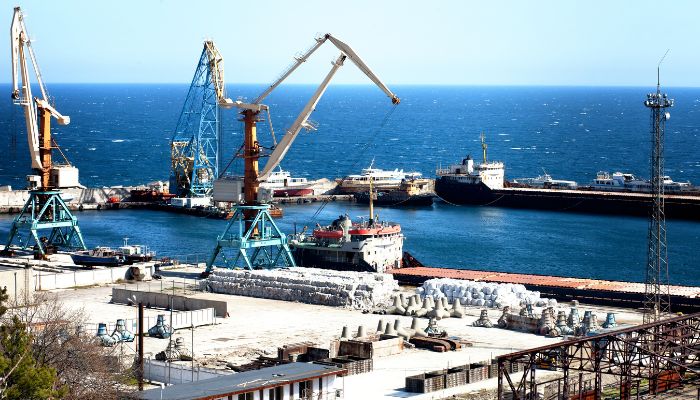

The port has two terminals, one handling general cargo and RORO, while the other deals with containers.
Terport Villeta covers 50 hectares, and another 150 hectares are left to construct a logistics park accommodating at least 20 companies.
The container terminal has 320 metres of frontage on the Paraguay River. There is a 200-metre-long pier with two mooring dolphins and metal fenders with rubber bumpers. It has a better draught for receiving large barges and cargo ships than San Antonio port.
It also has a container yard for keeping 8500 TEUs and 350 plugs for refrigerated containers plus 60 additional for pre-trip of refrigerated cargo.
The port also has emergency generators and a customs warehouse covering 1800 square metres. It has significant port equipment, including 2 Liebherr cranes, reach stackers, two rubber-tired crates and forklifts for lifting 2.5 to 10 tonnes.
Terport Villeta would become the transport hub of south-central South America and the primary centre for handling international container traffic in Paraguay.
The terminal opened in 2018 and has a Navis terminal operating system for increasing competitiveness and meeting global standards. The new infrastructure and technological upgrades will allow the country to tackle new challenges.
This facility is just 35 km from Asunción and covers 13.5 hectares. It has a 435 m long and 8 m deep pier, with a 25 m platform. It is operational throughout the year. Near the port are beaches spanning six hectares and a small closed warehouse. It was specially constructed for handling heavy machinery but dealt with various cargo.
It is the largest grain port in Paraguay and has a capacity of 2,60,000 tonnes. It can ship almost 20,000 tonnes of grains daily and handles over 50 trucks every day.
The port lies on 394 ft of coastline on the Parana river waterfront and has a draft of 33 feet. It also has 4500 container yard slots and about 240 reefer points.
It spans 15 hectares and has a 120-metre-long coastline with a high-capacity wharf capable of simultaneously operating two cranes. It also handles RORO on its newly constructed RORO ramp, just south of the pier, for special cargo operations.
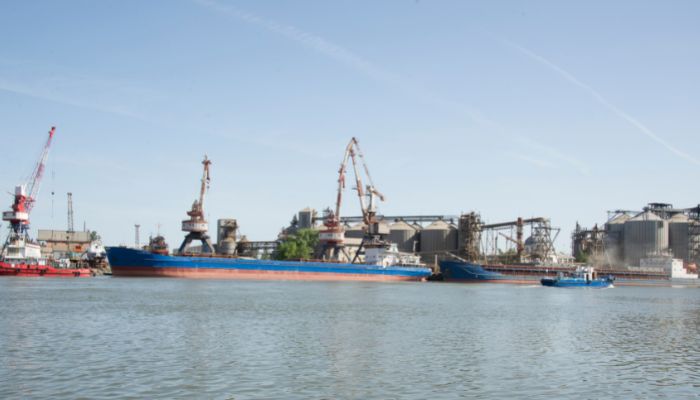

San Antonio port has 2500 m2 of covered warehouse space and over two thousand slots for keeping pallets in racks. It boasts extensive equipment for smooth and efficient functioning, such as a fixed Liebherr crane with a lifting capacity of 45 tonnes, three mobile cranes for lifting 80 tonnes, forklifts, trucks and most importantly, a grain consolidator vacuum machine for shipping seeds in containers.
The town of San Antonio was founded in the late 1800s and played a significant role during the Paraguayan war. The first industries emerged in the 1920s, including tanning, alcohol production, and processed meat factories. In the 2000s, some telecommunication companies also established themselves in the town.
The city’s first port, called Naranja, was established in 1926. It was founded to export fruits, particularly oranges, since there was an expansive orange plantation nearby.
From the mid-1950s to the late 1990s, Puerto Minera shipped stones and other construction materials from Cerro Nemby. It was used for making the roads of Puerto Pilcomayo, an Argentinian town on the right bank of the Paraguay river.
Today, San Antonio port handles all kinds of cargo. Also, fishing is an important economic activity which supports locals too. The Paraguay river has ample fish such as pacu, Corvina, piranha, surubi, dorado etc.
Concepcion is the main town and a river port in the northern part of Paraguay, lying on the Paraguay river, just 138 metres north of Asuncion and around 345 feet above sea level. It is the main port for exporting the famous Paraguay tea, also known as yerba mate.
It has a handling capacity of 53,000 tonnes and can ship 8000 tonnes a day. The port can accommodate over 40 trucks daily.
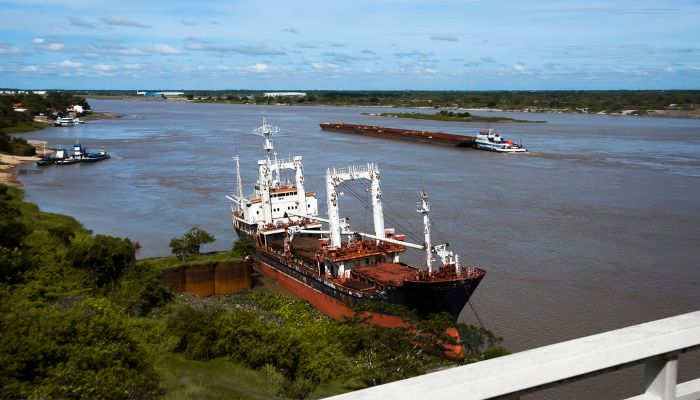

The town was established in the 19th century by a Spanish Governor called Agustin Fernado de Pinedo. It flourished in the 20th century as it evolved into a commercial centre and a trade hub by exploiting the newly found riches of Gran Chaco. It played an essential role during the country’s 1947 Civil War. At that time, the port was used for handling military supplies.
Today, it is a bustling centre of trade and tourism. It is also a port of call for river steamers plying to and from Brazil, including Corumba in Matto Grosso. The town has street railways, a national college, public schools, a market centre and a few commercial establishments.
Pilar is the capital of Neembucu and lies on the Paraguay river in southwestern Paraguay. It is an important centre of trade and the seat of government in this part of the nation. Pilar is also one of the cleanest and safest cities in Paraguay.
Located close to the Argentina-Paraguay border, the ferry terminal of Pillar links it to Puerto Cano city, close to prominent Argentinian cities.
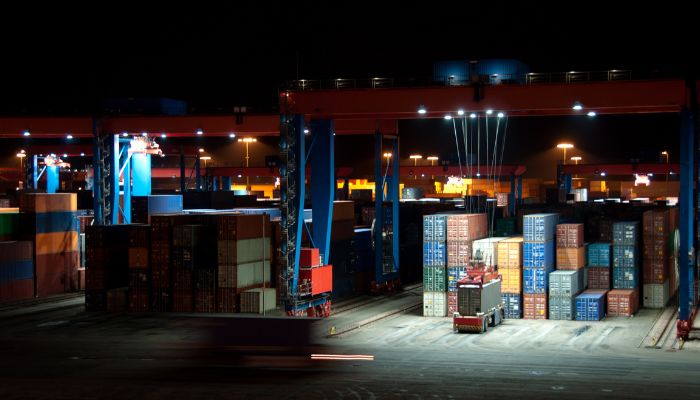

Recently the Port Authority spent over 32 billion in upgrading the Pilar terminal. The dock was expanded, and a warehouse was also constructed for storing merchandise. Around 13 billion were invested in purchasing new port equipment.
The public port is situated at the Paraguay river, close to the Paraguay-Parana Waterway.
The terminal covers a total area of around five hectares. Additionally, it has an 18,000 m2 container area, drainage systems and yards. It has storage sheds covering 970 2 and 1000 m2. Equipment includes a fixed crane capable of lifting 50 tonnes, a 27-metre outreach arm, trucks, forklifts and reach stackers.
The Pilar port also has a concrete dock with dolphins to enable the mooring of small boats and pleasure crafts.
The new port station is situated at a point where it can operate throughout the year, despite the cyclical issue of the reducing levels of the Paraguay River.
Many tourists visit Pilar since it houses considerable historical buildings and places which date back to the city’s establishment. The Basilica of Our Lady of Pilar is a beautiful church built by Italian missionaries.
The city’s location is ideal for boating and fishing. Hence, it hosts a vast fishing tournament and a competition in which people from all over the country and North Argentina participate.
Also, the government has invested about 10 million in developing the waterfront, which is lined with walking paths and parks. The city also has a beach filled with people during the hot summer.
Asuncion was founded in the 16th century and lay on the Paraguay river. It is managed by the ANNP, an independent government agency that collaborated with the private sector to develop the country’s infrastructure, particularly ports and terminals.
This port exports livestock and agricultural products like corn, soy, animal feeds, beef and vegetable oils. Imports are dominated by heavy machinery, automobiles, chemical products etc.
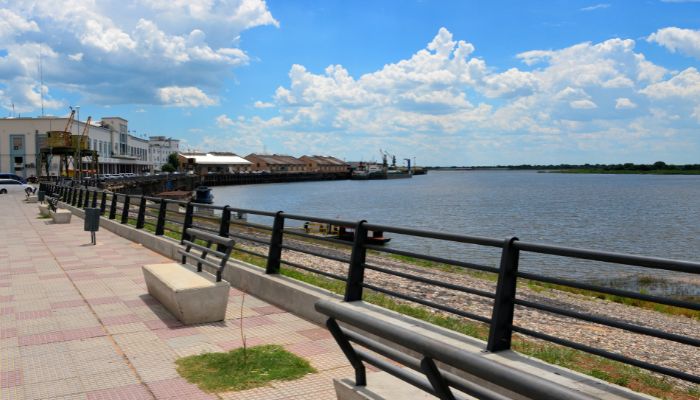

The city is served by a river port located downtown. It is situated inside a bay, with another terminal in Sajonia. There is a shuttle port in Ita Enramada close to the Argentine city of Clorinda.
Around 20 million tonnes of cargo are handled at the port every year, which generates a revenue of over 500 million US dollars.
The port also deals with containerised cargo, bulk cargo and refrigerated goods. It has two closed warehouses and an open yard. It offers loading, stowage and anchorage services.
You might also like to read-
Disclaimer: The authors’ views expressed in this article do not necessarily reflect the views of The Marine Learners. Data and charts, if used, in the article have been sourced from available information and have not been authenticated by any statutory authority. The author and The Marine Learners do not claim it to be accurate nor accept any responsibility for the same. The views constitute only the opinions and do not constitute any guidelines or recommendations on any course of action to be followed by the reader.
The article or images cannot be reproduced, copied, shared, or used in any form without the permission of the author and The Marine Learners.










We believe that knowledge is power, and we’re committed to empowering our readers with the information and resources they need to succeed in the merchant navy industry.
Whether you’re looking for advice on career planning, news and analysis, or just want to connect with other aspiring merchant navy applicants, The Marine Learners is the place to be.